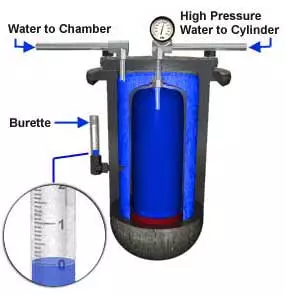When it comes to assuring the safety and dependability of cylinders used for various reasons, including the storage and transportation of compressed gases, one of the most important steps is the procedure known as the visual cylinder inspection. This inspection includes a comprehensive visual examination of the outside of the cylinder, including its valves, fittings, and markings, to detect any evidence of damage, corrosion, or other concerns that can threaten its integrity. This inspection aims to ensure that the integrity of the cylinder is not compromised. This article will dig into the specifics of visually inspecting cylinders, stressing their significance, important components, and their role in ensuring that safety requirements are met.
Purpose of Visual Cylinder Inspection
The objective of the visual cylinder examination is to uate the state of the cylinder and locate any possible dangers or flaws in the component being inspected. Its purpose is to guarantee that the cylinder is in good operational condition and free from any damage or degradation that can jeopardize its structural soundness. By performing frequent visual inspections, cylinder owners and operators can discover early indicators of wear, corrosion, or other concerns. This enables them to take the proper precautions to avoid accidents or malfunctions caused by the cylinders.
Preparing for the Inspection
It is essential to complete all necessary preparatory tasks before beginning the visual examination of the cylinders. During this step, you must find an appropriate examination space with enough ventilation and clear of any ignition sources. In addition, the inspector must have access to the required inspection instruments, such as flashlights, mirrors, and magnifying glasses, to facilitate the inspection of regions that are difficult to access. In addition, the inspector has to take precautions to safeguard themselves during the procedure by wearing the appropriate personal protective equipment. This gear should include safety glasses and gloves.
Exterior Inspection
During the outside inspection, the outer surface of the cylinder, as well as its components, are carefully inspected in great detail. The inspector has to thoroughly examine the cylinder to look for any indications of physical damage, such as dents, scratches, or bulges, that might cause the cylinder’s structural integrity to be compromised. They need to look for any evidence of leakage, corrosion, or loose connections while inspecting the valves, fittings, and protective caps. In addition, it is the inspector’s responsibility to ensure that the markings on the cylinder are legible and accurate. These markings should include the name of the manufacturer, the serial number, and the pressure rating.
Cylinder Neck and Valve Inspection
The valve and neck of the cylinder are critical components to ensure the cylinder is used correctly. During the visual examination, the inspector should look for symptoms of cracks, fractures, or deformation in the neck region. Additionally, they must inspect the valve threads for any signs of corrosion or wear that might compromise the valve’s ability to close tightly. The inspector must also check the condition and operation of the valve’s handle, stem, and protective cover.
Stamping and Requalification Marks
Periodic requalification of cylinders is a crucial process that ensures their ongoing safety and compliance with relevant requirements. During the visual examination, it is essential to check for requalification and stamping marks on the cylinder, including those related to “Dema New Orleans” standards. These markings provide vital information about the cylinder’s service life and testing history, such as the date of its last requalification. It is imperative to carefully track and address any grade inconsistencies or omissions to maintain the highest level of safety and compliance. By adhering to proper requalification procedures and staying updated with industry standards cylinder owners can ensure the continued reliability and integrity of their equipment.
Documentation and Record-Keeping
The visual examination of cylinders requires a thorough of record-keeping. Each inspection should include a detailed report of the inspector’s observations, problems found, and fixes implemented. The records you’ve compiled here will come in handy during subsequent checks, and you can also use them to keep tabs on each cylinder’s service record. Further, it helps all parties engaged in the cylinder’s lifespan communicate clearly and effectively to guarantee regulatory compliance.
Conclusion
Compressed gas cylinders must be regularly inspected visually to ensure user safety and dependability. Cylinder owners and operators can avoid accidents and guarantee conformity with safety regulations by conducting regular visual inspections. The visual cylinder inspection process plays an important role in ensuring the integrity and performance of cylinders by following a defined inspection routine, preparing sufficiently, and recording the results. The safe and effective use of cylinders in various industries depends on rigorous inspection and maintenance.

